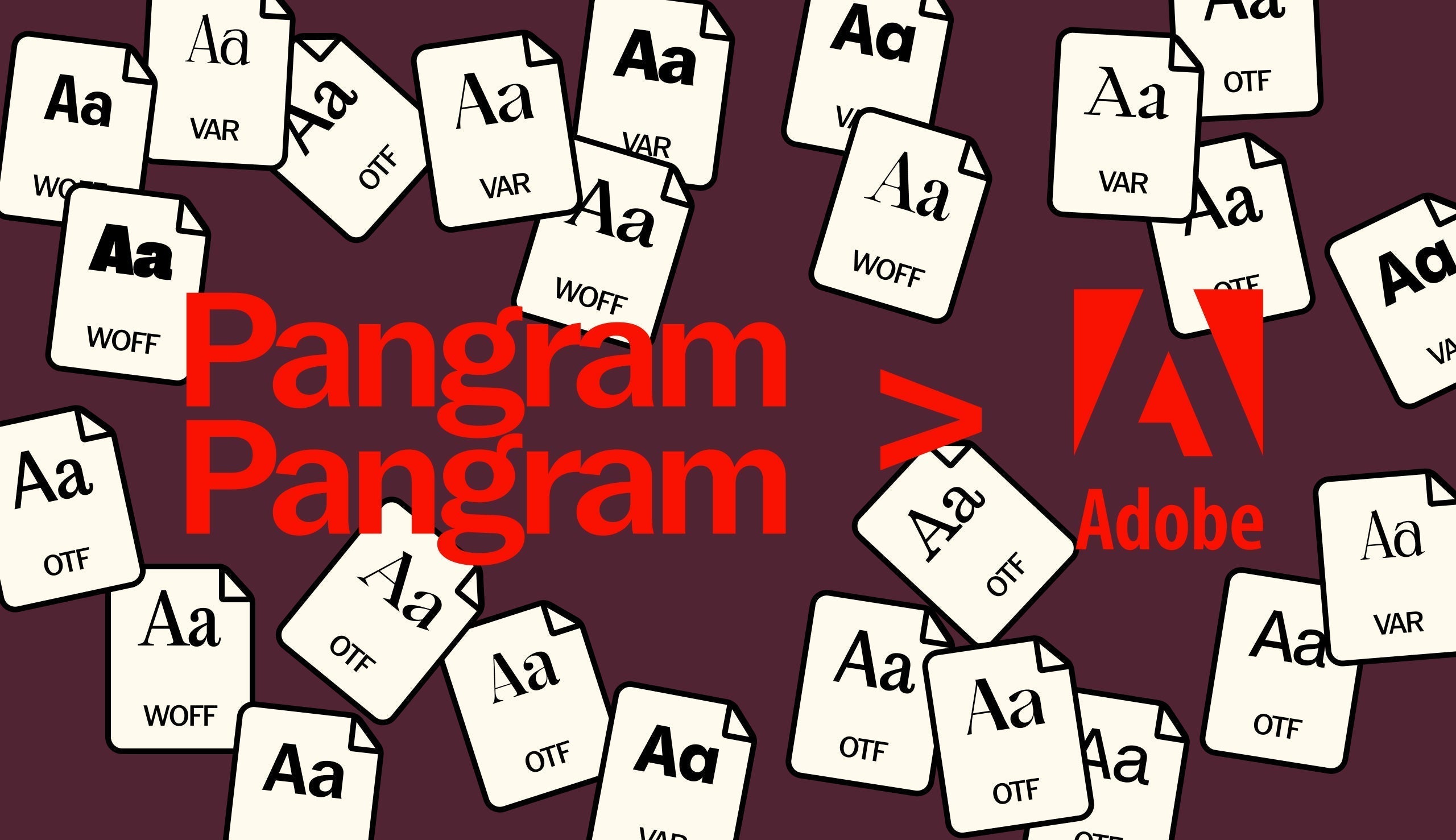First, there was light. Then came Editorial New. Now, we welcome Editorial Sans.
Pangram Pangram’s sunny Summer unveiling, PP Editorial Sans is PP’s latest release, and the most recent development on Editorial New’s legacy – following the addition of beautiful italics designed by Francesca Bologini last year. Courtesy of Milanese type designer, Andrea Biggio, the 16-style typeface does exactly what it says on the tin, ridding Editorial New of its serifs, creating something entirely new, refreshing and exciting in the process – all whilst wonderfully retaining the distinct character of PP’s fan-favourite. It’s oh-so slick and ever-so timeless. And don’t you forget, there are absolutely no serifs. None whatsoever, don’t you even try to find any!
Speaking more to Andrea, we get into the nitty-gritty of PP Editorial Sans, the process of de-serifing a typeface, and the challenges of designing its italics.


Quite simply, where did you start with Editorial Sans ? How do you go about kicking off an undertaking like this??
Andrea: The goal of this project was to create the Sans Serif version of Editorial New, and honestly, it was my first time developing a typeface from Serif to Sans. We began by researching similar typefaces and testing various levels of contrast, terminal styles, and proportions. We needed to figure out whether to design a Sans with similar contrast to the Serif, but not too much, or opt for a low-contrast version. Removing the serifs required us to completely rethink the proportions of the typeface. All these aspects were undoubtedly the most crucial part of the project.
What was the most challenging part of the process? (and how did you get through it?)
Andrea: The first steps and tests were definitely challenging, but in cases like these, I think the most difficult part is taking a typeface like Editorial New, which was designed by another designer, and making modifications that don’t alter the essence of the typeface while staying true to the original design. This is especially tricky when the typeface wasn’t initially designed with shapes and parameters that easily translate into both Serif and Sans versions.


How different was the process of designing Editorial Sans compared to other typefaces you’ve designed?
Andrea: I worked on developing typefaces starting from another designer’s drawings before, and these kinds of projects are mainly about production. For projects like Editorial Sans, a good amount of research and testing was necessary, but since the design already existed, we didn’t have to deviate much. This made the process more about careful adaptation rather than creating something entirely new from scratch. As I was saying, the beginning was the hardest part. Once I got a handle on the contrast, proportions, and terminals, I worked on simplifying the shapes.


What was your journey like in designing its italics? Is it difficult to retain the typeface’s distinctive character when redrawing it so drastically?
Andrea: It’s not very common to create italics for a sans serif typeface, unless, as in this case, it’s a retail font where this decision was made early on. For custom projects, I usually just slant the Roman. However, I really enjoy this typographic style and would almost always like to design it for a sans serif if it fits the typeface.
The choice to go with italics instead of slants was pretty straightforward; from the initial discussions with Mat, we agreed on this possibility. After testing both italics and slants, we settled on the option we thought was more intriguing
I don’t think the italics in Editorial Sans are drastically different from the Roman. They’re a blend of slanted and true italics. Unlike true italics, some letters stay the same, but the sharp angle gives them a unique look. The curves/bowls change, proportions slim down a bit, and the overall rhythm shifts.


How does your approach to designing italics for sans and sans serifs differ?
Andrea: The idea of designing ‘true italic’ in sans serif typefaces is something that’s really starting to interest me. It’s very common to design slants for sans serif fonts, but I think it’s fascinating to design versions that are more like ‘true italic’ for certain projects. Modifying the design of some letters and increasing the slant angle gives the typeface a distinct character, in my opinion. The beauty of italics in serif fonts is that the design changes significantly from the Roman, which makes it almost like designing two distinct yet complementary families. Applying this approach to sans serif fonts is definitely different, since there are fewer details to work with, but it’s still very intriguing.




What’s your favourite glyph (and why)?
Andrea: I enjoy drawing the ‘a’, the ‘s’, and the double-storey ‘g’ in every typeface. I believe they are the most expressive letters in the Latin alphabet. However, I think the overall system is more important than any single glyph .


We also spoke to Pangram Pangram founder, and OG Editorial New designer, Mat, about his thoughts behind Editorial Sans. Subscribe to our newsletter to hear his opinions in next week’s paper!
PP Editorial Sans is free to try TODAY, with licences starting at only $40. Get stuck in!










